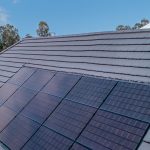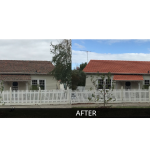
The Importance of Valley Iron for Your Roof Restoration Project
06 January 2022Valley iron is a significant part of a roof introduced at the lower part of two inclining roof surfaces. It guarantees that water from the downpour and different sources streams from the house, forestalling water harm and assisting with amplifying the life expectancy of your roof. At Higgins Roofing, we’re fit for giving roof valley iron substitution when there is damage, and the metal has eroded.
The roof valley is a moving piece of the roof to introduce. The water from both roof planes is diverted into the valley, so it collects the most water. In this way, the roof valley will see the most wear and is the second no doubt spot on a roof to foster a break. Makers might expect you to have a specific roof valley type covered by their restricted guarantee. Thus, your decision of roof valley establishment strategy is important to keep up with your guarantee and get the best life span from your roof.
Woven Roof Valley
In a woven valley, shingles are woven together through the valley. The material expert introduces shingles on the two planes without a moment’s delay. When they arrive at the valley, they weave the shingles from each plane, without cutting them.
A woven valley makes a persistent look. In any case, it is a test to put the weave in the valley. Woven valleys are trying to introduce with cover shingles, which are stiffer and thicker than 3-tab shingles. They probably won’t twist enough to be woven flawlessly, but not in cold environments. Along these lines, woven valleys are not recommended by most cover shingle makers. Having woven valleys introduced may void your restricted guarantee.
Woven valleys don’t save the material expert on schedule or materials over shut cut valleys. Getting a legitimate weave could take additional time than the regular roofer needs to accomplish for a shut cut valley. Thus, woven valleys are presently seldom seen.
Shut Cut Roof Valley
You can distinguish a roof valley by the straight line of cut shingles running down the estimated centre of the valley. To get this look, a material expert introduces the shingles on one roof plane first. Then, at that point, they introduce the shingles on the subsequent plane, permitting them to cover the primary layer. At long last, they cut the second layer of shingles in an orderly fashion two crawls from the focal point of the valley. Because of this establishment technique, the top layer of shingles covers the base by a couple of inches.
Shingles introduced, a shut cut valley is logical but not the best decision. Covered shingles might be too thick to bow appropriately into the valley and too thick to even think about sitting flawlessly underneath the second layer of shingles. It’ll take a roofer longer to slice through the layers of the overlay shingles.
The Consequences of Damaged Valley Iron
Valley iron that has not been all around keeping up with and has become harmed can have different results of shifting seriousness. Concrete from the material can stream into the drain, eroding the metal and causing blockages. As the framework redirects water, this can prompt water to saturate the house and create underlying issues.
Moreover, valley iron can rust without customary upkeep. This can spread to the drains, causing small openings that exasperate spillages and make them unsuitable for use.
Recent Posts
-
 Monier SOLARtile vs Bolt-On Panels: Integrated Solar Roofing for Melbourne Homes
Monier SOLARtile vs Bolt-On Panels: Integrated Solar Roofing for Melbourne Homes -
 Monier C-LOC™ Concrete Roof Tiles: Superior Gloss Retention, Durability & Long-Lasting Performance
Monier C-LOC™ Concrete Roof Tiles: Superior Gloss Retention, Durability & Long-Lasting Performance -
 Terracotta Tile Roof Restoration: 7 Signs Your Roof Needs Urgent Attention
Terracotta Tile Roof Restoration: 7 Signs Your Roof Needs Urgent Attention -
 Residential Roof Tile Installation: Preparing Your Home & Site for Installation Day
Residential Roof Tile Installation: Preparing Your Home & Site for Installation Day -
 Roof Extensions in Heritage Overlays: Matching Monier Profiles Without Breaching Planning Rules
Roof Extensions in Heritage Overlays: Matching Monier Profiles Without Breaching Planning Rules -
 Are Monier Concrete Roof Tiles the Most Economical Roofing Option? Here Are the Key Reasons
Are Monier Concrete Roof Tiles the Most Economical Roofing Option? Here Are the Key Reasons -
 Roof Tiling Melbourne: Expert Climate-Driven Choices for Long-Lasting Roofs
Roof Tiling Melbourne: Expert Climate-Driven Choices for Long-Lasting Roofs -
 Terracotta Roof Tiles: Monier Classic Styles Backed by Modern Roofing Technology
Terracotta Roof Tiles: Monier Classic Styles Backed by Modern Roofing Technology -
 Roofing Services Melbourne: Don’t Risk DIY – Call the Professionals
Roofing Services Melbourne: Don’t Risk DIY – Call the Professionals -
 Need Melbourne Roof Replacement? Choose Monier Tiles for Long-Lasting Results
Need Melbourne Roof Replacement? Choose Monier Tiles for Long-Lasting Results

